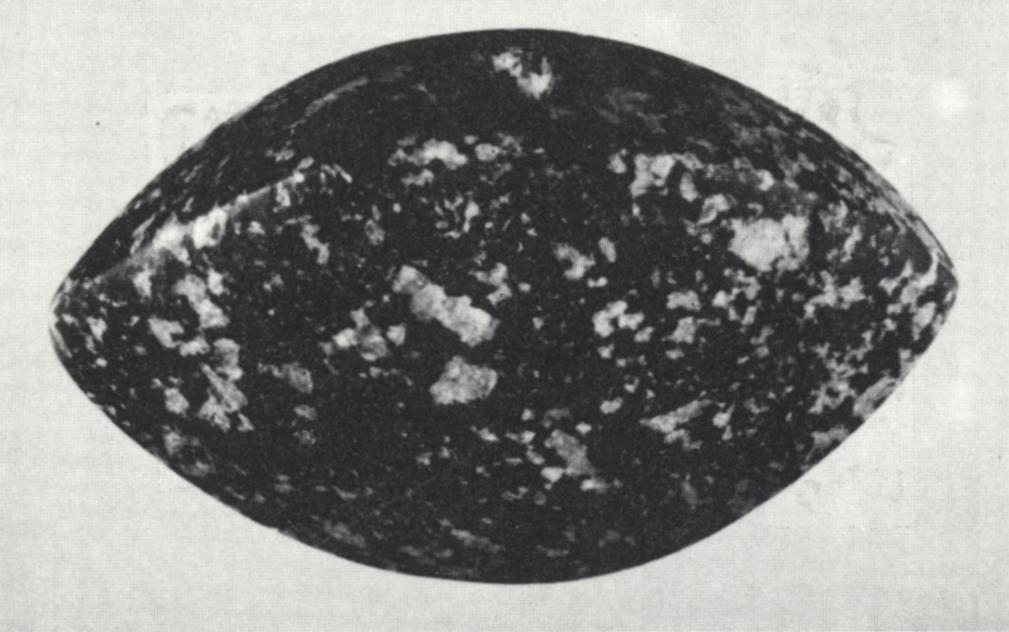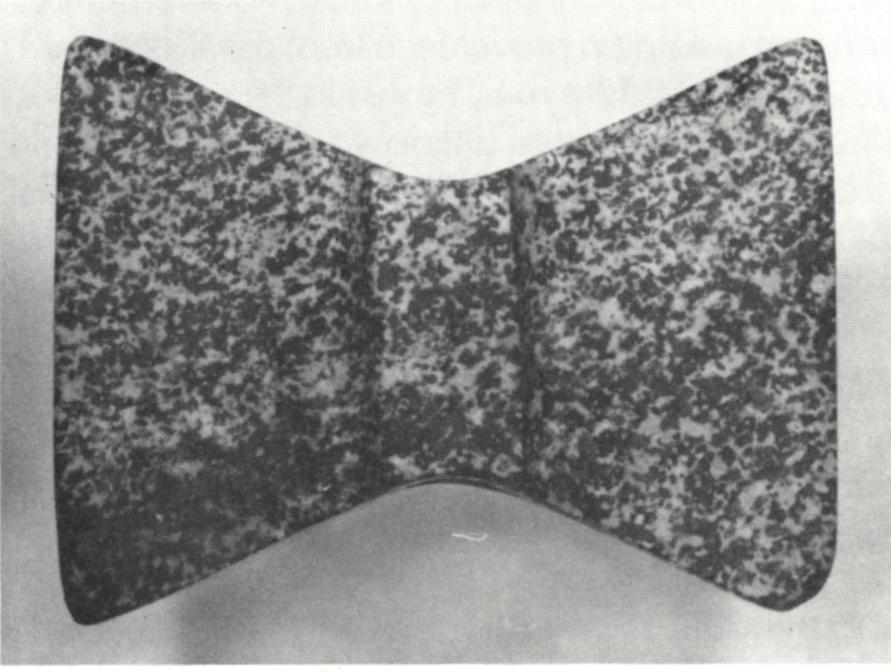Our understanding of banner types of the late Archaic Period is much better than the previous period due to the larger number of sites excavated in Northern Alabama, Tennessee and Kentucky. My interest in this project began with an incredible find made by my father on a river bank near the town of Rockport in Spencer County, Indiana. A burial had been exposed due to the falling Ohio River that contained two hook bannerstones and one hourglass bi-face bottle type. They had all been ceremonially “killed”. From the years we have collected from the site, five other banners have been found on the beach. Represented are two humped types, two other bi-face has practically gone unnoticed by researchers should alert us to the role bannerstones played in this burial ceremonialism and that these different types are of the same temporal placement. There are also reports of three different types found in a burial such as the cremation burial (Dowd 1989:102) found at the Anderson Site in Tennessee which contained two different types of oval banners and a segmented shell type. I also know of a burial found in Harrison County, Indiana that contained a horn banner, a single- face bottle type and a triangular type which were found together only inches apart. A cremation burial at Crib Mound in Spencer County, Indiana contained three quartz butterfly types and three granite hinge type banners.
In the past, sites located along the Green River in Kentucky have been described as a single cultural unit with the artifacts lumped together and described as the Green River Phase. However, it has been recognized for some time that several different components are represented. These middens as the ones in Indiana and elsewhere date at different periods of the bannerstone making area and the components vary from site to site. These mid-dens are also difficult to analyze because the soil has the same color and texture and there seems to be no stratigraphic relationship between the artifacts. Hopefully in the future these different components of the late archaic can be identified and separated from this conglomeration of traits found throughout the journals.


The first is his use of primary forms which are represented by right basic forms that he states evolved into thirty-two ultimate designs or types. I suggest these primary forms are nothing more than blending forms in the evolutionary chart and their crude appearance may be due to specimens being made by poor craftsmen or specimens found at the fringe of the bannerstone making area. He also states that ultimate decisions which he placed at the end of the evolutionary chart, could not be classified as types unless they were made of the proper materials and this certainly is erroneous. I think they had a preference for certain materials and would probably go to extraordinary lengths to obtain it,but if itwasn’t available, they most certainly used a substitute. For example, I have found three broken geniculate pieces in Spencer County, Indiana and none were made of banded slate, the preferred material.
The last issue is whether an adjustment is needed in the typology to include new types. I am aware of several that should be included in the chronological chart as new types but what should be done about those specimens of different construction and different temporal periods that are identified by the same name. One example of this is the use of the type name hourglass to describe the single-face hourglass type such contradiction but unaware of the temporal difference when he stated (Knoblock 1939:129) “because these objects are nothing more than hourglass variations, there is no reason why they should be put into an independent group”. These same arguments can also be found among other types. The only work done on bannerstone chronology in a scientific manner was by Mary Kwas (1981). She has used the date from excavated sites where banners where found to loosely arrange their order of appearance. It is a very good report considering the data she was working with. I am having the same problems as she with poor descriptions and photos. She has limited her report to types found only in the Southeast and the temporal placement for these types is weak because researchers from which her material was gathered used broad temporal periods to describe units of culture that were obviously much smaller.


In concluding this paper I would like to impress upon the readers the enjoyment and satisfaction of this bannerstone study. It has ben very gratifying to make these small discoveries and slowly observe this chronological order unfolding.
I would also like to comment on the danger of misinterpreting the data. As one works with these specimens in trying to establish their chronological sequence, one has to be very cautious in his interpretations because the temptation is great to arrange them in an order that may seem very obvious with perceived evolutionary lines and planes but arranging these specimens without the advantage of stratigraphy could give erroneous results. This is a very complex problem and it will undoubtably require the excavation of new archaeological sites for more data. This may be a problem because it now appears that some universities are beginning to pull back from their field explorations due to pressure from certain Indian groups. The ideas expressed in this paper are mine alone and I take full responsibility for their content.